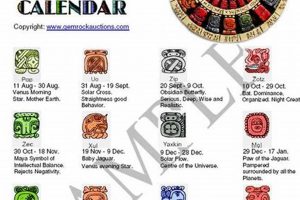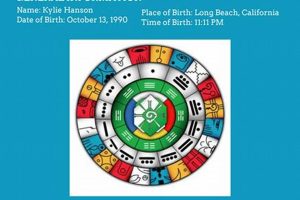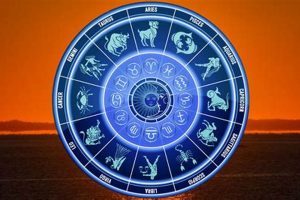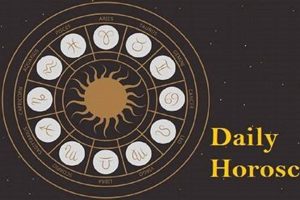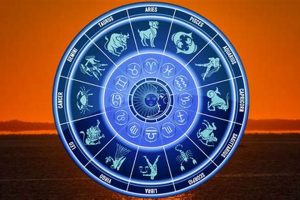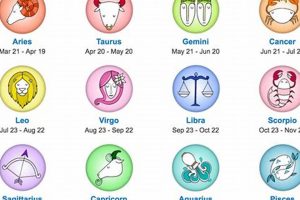This Mesoamerican system of divination and prophecy utilizes a complex calendar system to understand cycles of time and their influence on human lives. It differs significantly from Western astrology, focusing on the interplay of energies associated with specific dates within the Mayan calendar, such as the Tzolkin (sacred calendar) and the Haab (civil calendar). For example, a person’s birth date corresponds to a specific combination of energies that influence their personality and destiny.
Practitioners believe this system offers profound insights into personality traits, life purpose, and potential future outcomes. Rooted in ancient Mayan culture, it provides a unique framework for self-discovery and understanding one’s place within the interconnectedness of the cosmos. Historically, it played a vital role in Mayan society, guiding decisions related to agriculture, ceremonies, and governance. Its enduring presence testifies to its perceived value across generations.
Further exploration will delve into the intricacies of the Mayan calendar system, the significance of specific glyphs and deities, and the practical application of these principles in contemporary life.
Tips for Understanding and Applying Mesoamerican Astrology
These suggestions offer practical guidance for navigating this complex system and integrating its wisdom into daily life.
Tip 1: Understand the Calendar System: Familiarization with the Tzolkin (sacred calendar) and Haab (civil calendar) is foundational. These interlocking calendars form the basis for interpreting energies and cycles.
Tip 2: Identify Your Day Sign: Determining one’s birth date within the Tzolkin reveals the associated day sign and its corresponding energies, offering insights into personality and life path.
Tip 3: Consult with a Practitioner: A knowledgeable practitioner can provide personalized readings and interpretations based on individual birth dates and current cycles.
Tip 4: Explore the Mayan Pantheon: Understanding the roles and energies of Mayan deities enhances comprehension of the symbolic language embedded within this astrological system.
Tip 5: Engage with Mayan Culture: Immersing oneself in Mayan history, art, and traditions provides deeper context and appreciation for this ancient practice.
Tip 6: Integrate Insights into Daily Life: Applying the wisdom of this system can offer guidance in decision-making, relationship dynamics, and personal growth.
Tip 7: Approach with Respect: Treat this tradition with reverence, acknowledging its cultural significance and avoiding superficial interpretations.
By following these tips, one can cultivate a deeper understanding and appreciation of this rich astrological tradition and its potential for self-discovery.
The concluding section will summarize the key benefits and offer further resources for continued exploration.
1. Tzolkin Calendar
The Tzolkin calendar forms the foundation of this Mesoamerican system. This 260-day calendar, comprised of 13 numbers and 20 day signs, generates a unique energetic signature for each day. This cycle influences personality traits, life path, and auspicious timings. For example, individuals born on a day associated with the deity Imix might exhibit nurturing and grounding qualities, while those born under Ik might possess artistic and visionary inclinations. The Tzolkin provides a framework for understanding these inherent energies and their interplay.
Its significance lies in its ability to reveal recurring patterns and cycles of energy. By understanding one’s birth date within the Tzolkin, individuals gain insight into their strengths, weaknesses, and karmic predispositions. This knowledge empowers individuals to make informed decisions aligned with their energetic blueprint. For instance, certain Tzolkin days are considered auspicious for specific activities like planting crops, conducting ceremonies, or engaging in creative endeavors. This practical application highlights the calendar’s enduring relevance.
In essence, the Tzolkin calendar serves as a crucial tool for self-discovery and navigating life’s journey within the framework of Mesoamerican astrology. While complexities exist in interpreting its interwoven cycles, its fundamental purpose remains to provide a roadmap for understanding individual destinies and cosmic influences. Further investigation into the interplay between the Tzolkin and the Haab (365-day calendar) expands this understanding and reveals a richer tapestry of meaning.
2. Haab Calendar
The Haab calendar, a 365-day solar calendar, plays a crucial role within the broader framework of Mesoamerican astrology. Comprised of 18 months of 20 days each, plus a five-day period known as Wayeb’, the Haab aligns with the solar year and governs agricultural cycles. Its connection to this astrological system lies in its interplay with the Tzolkin calendar. The combined cycles of the Haab and Tzolkin create a Calendar Round, a 52-year cycle marking significant periods within Mayan cosmology. For example, specific combinations of Haab and Tzolkin dates were considered auspicious for certain ceremonies or agricultural practices. This illustrates the Haab’s practical significance in daily life.
Understanding the Haab’s influence enhances the interpretation of individual birth dates and broader astrological cycles. While the Tzolkin provides insight into personality and energetic predispositions, the Haab adds a layer of understanding related to earthly cycles and societal influences. For instance, the Wayeb’ period, often associated with introspection and transition, held particular significance for rituals and preparations for the new year. Analyzing the Haab’s position within the Calendar Round reveals broader societal and historical trends, providing a deeper understanding of the Mayan worldview.
In summary, the Haab calendar provides a crucial link between the solar year, agricultural cycles, and the intricacies of Mesoamerican astrology. Its interplay with the Tzolkin forms the backbone of the Calendar Round, a complex cycle shaping societal rhythms and individual destinies. Recognizing the Haab’s significance expands the understanding of this astrological system and its profound impact on Mayan culture and cosmology.
3. Day Signs (glyphs)
Within Mesoamerican astrology, day signs, represented by glyphs, function as fundamental building blocks, each imbued with unique energetic qualities. These glyphs, corresponding to specific days within the Tzolkin calendar, influence personality traits, life path, and destiny. Understanding their symbolism provides a crucial key to interpreting this complex astrological system.
- Imix:
Symbolizing primordial waters and the source of life, Imix represents nurturing, grounding, and beginnings. Individuals born under this sign often exhibit strong maternal instincts and a connection to nature. In Mesoamerican astrology, Imix signifies the potential for growth and the cyclical nature of existence.
- Ik:
Associated with wind, spirit, and inspiration, Ik represents creativity, vision, and communication. Individuals born under this sign often possess artistic talents and a capacity for innovative thinking. Within this astrological system, Ik signifies the power of breath, the interconnectedness of all things, and the importance of expressing one’s authentic voice.
- Akbal:
Representing darkness, the underworld, and introspection, Akbal signifies intuition, mystery, and inner strength. Individuals born under this sign often possess deep emotional intelligence and a capacity for navigating complex situations. In Mesoamerican astrology, Akbal highlights the importance of shadow work and the transformative power of confronting one’s inner demons.
- Kan:
Symbolizing the maize god and abundance, Kan represents growth, nourishment, and prosperity. Individuals born under this sign often exhibit a strong work ethic and a connection to the earth. Within this astrological system, Kan signifies the importance of community, the cyclical nature of growth and decay, and the blessings of the natural world.
These examples illustrate how day signs function as archetypal energies influencing individual destinies within the framework of Mesoamerican astrology. Further exploration of the remaining sixteen day signs reveals a comprehensive picture of this intricate system and its potential for self-discovery and understanding one’s place within the cosmos.
4. Mayan Deities
Mayan deities play an integral role within Mesoamerican astrology, embodying cosmic forces and influencing the interpretation of astrological cycles. Each deity possesses specific attributes and associations, impacting the energies of particular day signs, calendar periods, and individual destinies. This intricate relationship between deities and astrology provides a deeper understanding of the Mayan worldview and the forces shaping human experience. For example, the deity Itzamn, associated with creation and wisdom, holds influence over the day sign Imix, imbuing it with qualities of nurturing and beginnings. Similarly, the deity Kukulkan, the feathered serpent god, resonates with the energy of transformation and new cycles, influencing periods of change within the Mayan calendar. These connections highlight the deities’ active participation in shaping astrological interpretations.
Understanding the characteristics and roles of specific deities enhances the interpretation of individual birth charts and broader astrological trends. A person born under the influence of a particular deity might exhibit personality traits or life paths aligned with that deity’s domain. For instance, an individual born under the influence of the goddess Ixchel, associated with weaving and medicine, might demonstrate healing abilities or a strong connection to artistic expression. Furthermore, specific rituals and ceremonies, often dedicated to particular deities, align with astrological events, reinforcing the interconnectedness of these elements. Analyzing these connections provides valuable insights into the practical application of Mesoamerican astrology in daily life, guiding decision-making, and fostering spiritual growth.
In summary, Mayan deities are not merely symbolic figures but active forces within Mesoamerican astrology. Their influence permeates the interpretation of day signs, calendar cycles, and individual destinies, providing a framework for understanding the complex interplay of cosmic energies and human experience. Recognizing this connection deepens appreciation for the richness and sophistication of this ancient astrological system and its enduring relevance in contemporary practice. Further study of individual deities and their astrological correspondences reveals a more nuanced understanding of this complex system.
5. Rituals and Ceremonies
Rituals and ceremonies form an integral part of Mesoamerican astrology, serving as a practical application of its principles and a means of aligning with cosmic energies. These practices, often timed according to specific astrological events, aim to connect individuals with the energies of deities, day signs, and calendar cycles. Their purpose ranges from seeking guidance and blessings to marking significant life transitions and ensuring successful harvests. Examining these practices provides valuable insight into the practical implementation of astrological knowledge within Mayan culture.
- New Year Ceremonies:
Held during the Wayeb’ period, the five-day period at the end of the Haab calendar, these rituals focused on purification, reflection, and preparation for the new cycle. Activities included fasting, prayer, and offerings to specific deities associated with renewal and transition. These ceremonies demonstrate the importance of astrological cycles in shaping communal practices.
- Agricultural Rites:
Timed according to specific Haab dates and influenced by relevant deities like the maize god, these rituals sought to ensure successful harvests. Ceremonies involved offerings, prayers, and specific agricultural practices aligned with auspicious astrological periods. These rites highlight the practical application of astrological knowledge in daily life and the connection between celestial cycles and agricultural practices.
- Birth and Naming Ceremonies:
A child’s birth date, corresponding to a specific day sign within the Tzolkin calendar, profoundly influenced naming conventions and predictions about their future. Rituals performed shortly after birth aimed to connect the child with the energies of their day sign and invoke blessings from associated deities. This exemplifies the influence of astrological factors on individual destinies from the moment of birth.
- Healing Ceremonies:
Often conducted by healers or shamans possessing knowledge of both medicinal plants and astrological principles, these rituals sought to address physical and spiritual ailments. The timing of these ceremonies aligned with specific astrological configurations believed to be conducive to healing. This demonstrates the integration of astrological knowledge into traditional healing practices.
These examples illustrate the diverse ways rituals and ceremonies function as a bridge between the abstract principles of Mesoamerican astrology and the practical realities of Mayan life. These practices provide a tangible means of interacting with cosmic forces, seeking guidance, and marking significant life events within a framework defined by astrological cycles and the influence of Mayan deities. Further exploration of these rituals reveals a deeper understanding of the Mayan worldview and the integral role of astrology in shaping their cultural and spiritual practices.
6. Prophecy and Divination
Prophecy and divination represent integral components of Mesoamerican astrology, providing a framework for understanding past, present, and future events within the context of cyclical time and cosmic influence. These practices, informed by intricate calendar systems and the guidance of Mayan deities, served as crucial tools for decision-making, both on an individual and societal level. Exploring the connection between prophecy and divination within this astrological system reveals insights into the Mayan worldview and their relationship with time and destiny. The practice aimed to interpret auspicious and inauspicious periods, guiding actions and preparing for future events.
- Interpreting the Calendar:
Specialized priests and diviners utilized the complex interplay of the Tzolkin, Haab, and Long Count calendars to identify periods of potential challenges or opportunities. Specific calendar combinations, often associated with particular deities and their associated energies, informed predictions about future events. For example, certain periods within the Long Count were considered times of significant transformation, potentially bringing both upheaval and renewal. This interpretation provided a framework for understanding long-term societal cycles and preparing for potential shifts in power or environmental conditions. Priests would consult these calendars to advise rulers on matters of state, agriculture, and warfare.
- Ritualistic Divination:
Various ritualistic practices facilitated communication with the divine and provided insights into specific questions or concerns. These rituals often involved offerings, burning incense, and observing natural phenomena like the movement of celestial bodies or the behavior of animals. For instance, the practice of scrying, using reflective surfaces like obsidian mirrors or water, allowed diviners to perceive visions and receive messages from the spirit world. These divinatory practices provided guidance on individual matters, such as choosing a suitable partner, determining the cause of illness, or embarking on a journey.
- The Role of Oracles:
Oracles, individuals believed to possess a direct connection to the divine, played a crucial role in communicating prophecies and interpreting divine messages. Their pronouncements, often delivered in a trance-like state, carried significant weight within Mayan society and influenced important decisions. While the exact methods employed by oracles varied, their function remained consistent: to serve as intermediaries between the human and spirit worlds, providing guidance and insight into the unfolding of destiny. Their pronouncements often shaped political and social actions.
- Prophecies and the Long Count:
The Long Count calendar, with its vast cyclical timescale, formed the basis for long-term prophecies and predictions about the future. Specific dates within the Long Count, like the completion of baktuns (144,000-day cycles), were considered times of significant transition and potential upheaval. These prophecies often focused on themes of cyclical renewal, the return of deities, and the transformation of the world. The interpretation of these prophecies played a crucial role in shaping Mayan cosmology and their understanding of time’s cyclical nature.
These interconnected facets of prophecy and divination within Mesoamerican astrology underscore the Mayan preoccupation with understanding the cyclical nature of time and its influence on human affairs. By interpreting celestial and calendrical cycles, consulting oracles, and engaging in ritualistic practices, the Maya sought to align their actions with cosmic forces and navigate the complexities of fate and destiny. These practices highlight the central role of astrology in shaping Mayan society and their understanding of the interconnectedness of the human and spirit worlds.
7. Long Count Calendar
The Long Count calendar holds a unique position within Mesoamerican astrology, representing a vast timescale extending far beyond the scope of human lifespans. Unlike the Tzolkin and Haab calendars, which focus on cyclical periods of 260 and 365 days respectively, the Long Count measures time from a mythical creation date, providing a linear framework for understanding historical and cyclical time within Mayan cosmology. Its integration within astrological interpretations provides a broader context for understanding long-term cycles and prophecies, adding another layer of depth to this complex system.
- Baktuns and the Great Cycle:
The Long Count utilizes various units of time, with the baktun, equivalent to 144,000 days, representing a significant cycle. The completion of thirteen baktuns (approximately 5,125 years) marks a Great Cycle, believed to signify periods of profound transformation and renewal within Mayan cosmology. The end of the 13th baktun in 2012, for example, generated significant interest and speculation regarding its astrological and prophetic implications, highlighting the Long Count’s influence on contemporary understandings of Mayan beliefs.
- Historical and Cyclical Time:
The Long Count’s ability to pinpoint specific dates in linear time allows for the correlation of historical events with astrological cycles. This integration facilitates the analysis of past patterns and the potential recurrence of similar energies within the present and future. By understanding the astrological influences present during specific historical events, practitioners gain insight into the long-term patterns shaping civilizations and individual destinies. This connection between historical time and astrological cycles adds depth to the interpretation of present and future trends.
- Prophecy and the Long Count:
The Long Count provides a framework for long-term prophecies and predictions, often associated with the completion of baktuns or other significant cycles. These prophecies, rooted in Mayan mythology and cosmology, address themes of creation, destruction, and renewal, reflecting the cyclical nature of time and the influence of deities on human affairs. The interpretation of these prophecies played a vital role in shaping Mayan society and preparing for perceived periods of transformation or upheaval.
- Contemporary Applications:
While the Long Count’s significance within ancient Mayan culture remains undisputed, its relevance extends to contemporary astrological practices. Modern practitioners utilize the Long Count to understand broader historical cycles and their potential influence on present and future events. This integration of ancient wisdom with modern interpretations provides a unique perspective on personal and collective destinies, offering a framework for navigating current challenges and opportunities within the context of larger cyclical patterns.
The Long Count calendar’s integration within Mesoamerican astrology adds a dimension of deep time and cyclical patterns to the interpretation of individual destinies and societal trends. Its ability to link historical events with astrological cycles and its association with long-term prophecies provides valuable insights into the Mayan worldview and their sophisticated understanding of time’s intricate dance. By understanding the Long Count’s significance, contemporary practitioners gain a broader perspective on the interplay of individual lives within the context of vast cosmic cycles, enriching the practice and interpretation of this ancient astrological system.
Frequently Asked Questions about Mayan Astrology
This section addresses common inquiries regarding Mesoamerican astrology, offering concise and informative responses.
Question 1: How does Mesoamerican astrology differ from Western astrology?
Mesoamerican astrology, based on the Mayan calendar system, emphasizes cyclical time and the influence of Mayan deities, contrasting with Western astrology’s focus on planetary transits and zodiac signs. The core difference lies in the underlying cosmological frameworks and the interpretation of celestial influences.
Question 2: What is the significance of the Calendar Round?
The Calendar Round, formed by the interlocking cycles of the 260-day Tzolkin and the 365-day Haab calendars, represents a 52-year cycle crucial for understanding long-term patterns and recurring energies within Mayan cosmology. It provides a framework for interpreting historical events and predicting future trends.
Question 3: How can one determine their Mayan day sign?
One’s Mayan day sign is determined by their birth date within the Tzolkin calendar. Various online resources and consultations with practitioners specializing in this system can assist in identifying the corresponding day sign and its associated energies. Accurate calculation requires precise Gregorian to Mayan date conversion.
Question 4: What is the role of Mayan deities in this astrological system?
Mayan deities embody cosmic forces and influence the interpretation of specific day signs, calendar periods, and individual destinies. Understanding their attributes and associations enhances the interpretation of astrological charts and provides insights into the energies shaping human experience.
Question 5: How are prophecies and divination integrated into Mayan astrology?
Prophecy and divination, informed by the Mayan calendars and guided by deities, offer insights into past, present, and future events. These practices utilize ritualistic methods and calendar interpretations to understand cyclical time and navigate destiny.
Question 6: What is the significance of the 2012 baktun ending?
The completion of the 13th baktun in the Long Count calendar in 2012 marked the end of a significant cycle within Mayan cosmology. While often misinterpreted as an apocalyptic event, it signifies a period of transformation and the beginning of a new cycle, reflecting the cyclical nature of Mayan timekeeping.
These responses provide foundational knowledge for understanding the complexities of Mesoamerican astrology. Further exploration requires dedicated research and engagement with reputable sources specializing in this ancient tradition.
This concludes the FAQ section. The following sections will offer further exploration of specific topics within Mesoamerican astrology.
Conclusion
This exploration of Mesoamerican astrology has revealed a complex system rooted in ancient Mayan cosmology. The intricate interplay of the Tzolkin, Haab, and Long Count calendars, combined with the influence of Mayan deities and the practice of ritual and divination, provides a framework for understanding individual destinies and broader societal cycles. From the significance of day signs and their associated glyphs to the interpretation of prophecies and the profound implications of the Calendar Round, this system offers a unique perspective on the interconnectedness of time, destiny, and human experience.
This ancient system, far from being a relic of the past, continues to offer valuable insights into the cyclical nature of time and the forces shaping human lives. Further research and engagement with this rich tradition promise deeper understanding of Mayan culture and the enduring wisdom embedded within its astrological practices. The enduring legacy of this system invites continued exploration and thoughtful reflection on its potential to illuminate the human journey within the cosmos.


